CHAPTER 5

Human Resources
Mastery of the content in this chapter will enable the reader to:
• Discuss methods used to interview candidates effectively.
• Describe questions that can legally be asked of candidates.
• Clarify specific laws associated with human resources.
• Develop an employee personnel manual.
• Develop an employee procedure manual.
• Calculate staff wages when hiring new employees.
• Efficiently manage payroll and calculate taxes.
• Explain how to maintain payroll files.
• Develop team training protocols.
HIRING THE PERFECT TEAM
Asking the Right Questions
With a team of 10s in mind, it is essential to ask the right questions when interviewing potential candidates (Figure 5-1). Questions such as “Tell me about yourself,” “What do you know about our practice?” and “What is your single greatest achievement?” stimulate discussion instead of elicit a yes or no answer. “Describe a typical day in your last job,” promotes discussion regarding work ethic. Questions should prompt the candidate to show his or her skill and potential. Open-ended questions allow the applicant to discuss the question asked. What, when, where, why, and how are excellent words to use when asking an open-ended question. Every person believes he or she has an excellent work ethic and a great personality; the interviewer must be able to distinguish whether this is true. Closed-ended questions allow only a yes or no answer (Box 5-1).
Questions Not to Ask
The hiring process is highly regulated by federal and state laws. These laws exist for the protection of potential employees. Many questions cannot be asked in an interview. Any questions related to marriage, age, gender, religion, and military status are strictly prohibited. The interviewer cannot ask female applicants different questions than male applicants and cannot ask if they have any children. See Box 5-2 for a list of questions that cannot be asked.
LAWS THAT REQUIRE FAMILIARITY
Many laws and regulations apply to veterinary medicine. Laws and regulations change on a regular basis at both the federal and state levels. Every practice manager and office manager should be familiar with changes that occur, update the team with changes, and add or modify the personnel manual as needed (Box 5-3).
Immigration Reform and Control Act
The Immigration Reform and Control Act (IRCA) prohibits employer discrimination against any employee or potential employee because of national origin. I-9 forms should be filled out by new hires to confirm that they can legally work in the United States. The I-9 form is required to be completed by employers and states that the employer has examined the required documents verifying employment eligibility (Figure 5-2) (see the Evolve site accompanying this text for the complete form). Documents to verify include a birth or naturalization certificate, a U.S. passport, a valid foreign exchange passport authorizing employment in the United States, a resident alien card (green card), Social Security card, and driver’s license or state identification card. The documents should be photocopied and kept in the personnel file. The I-9 form must be kept for 3 years from the date of hire, or 1 year after termination, whichever is longer. ![]()
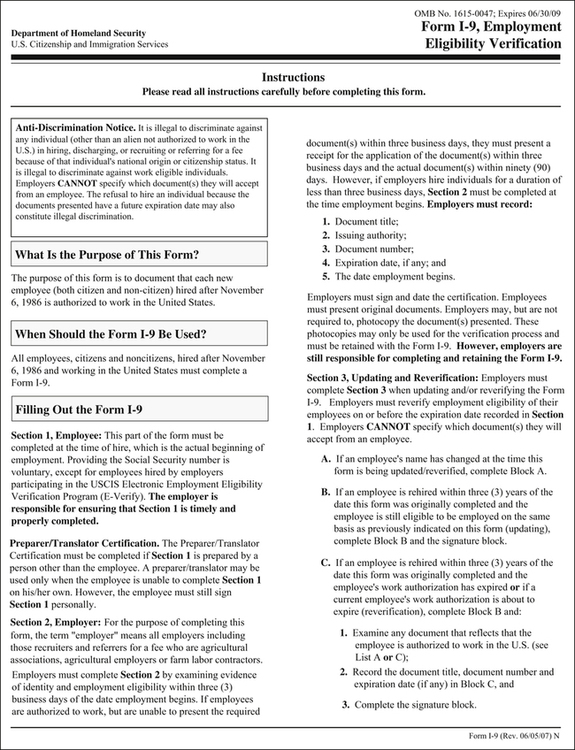
Occupational Safety and Health Administration
The Occupational Safety and Health Administration (OSHA) has set safety standards to protect employees. Employers must provide a safe work environment and comply with safety standards set forth by OSHA (see Chapter 21 for more information). OSHA has the authority to inspect workplace environments without advance notice to the employer. Safety hazard plans should be in place to help protect employees from dangers, and they must be enforced by the employer on a daily basis.
Required Posters
Posters informing employees of their rights are required and must be posted in a location visible by all employees. Posters can be picked up at any local or state labor department free of charge and do not have to be purchased from solicitors. Posters required include OSHA: It’s the Law, Equal Employment Opportunity, Family and Medical Leave Act of 1993, Employee Polygraph Protection Act, Immigration Reform and Control Act, the Uniformed Services Employment and Reemployment Rights Act, and the Fair Labor Act (Box 5-4; Figures 5-3 through 5-7).
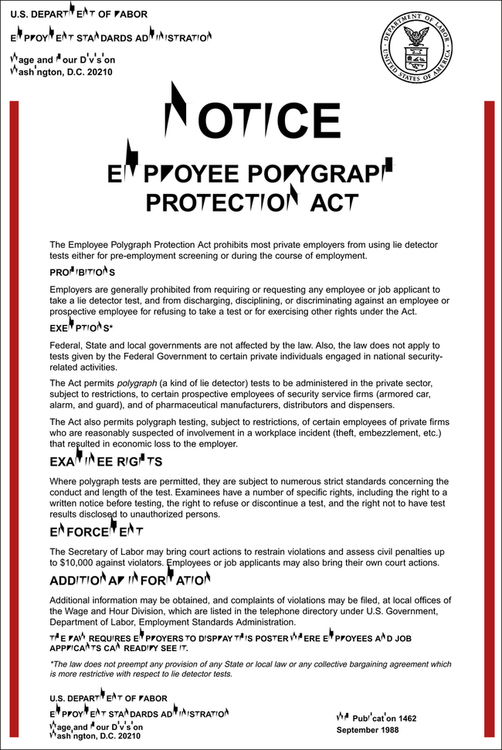
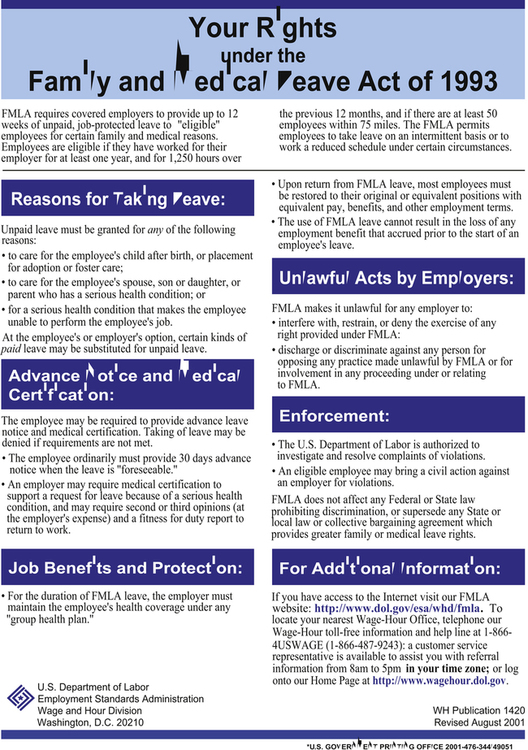
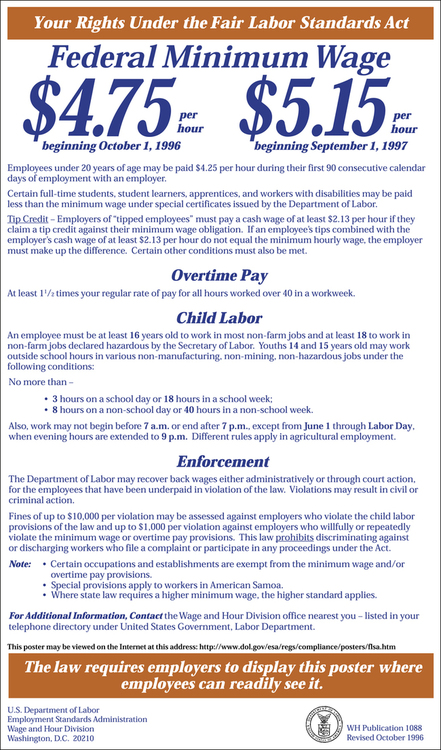
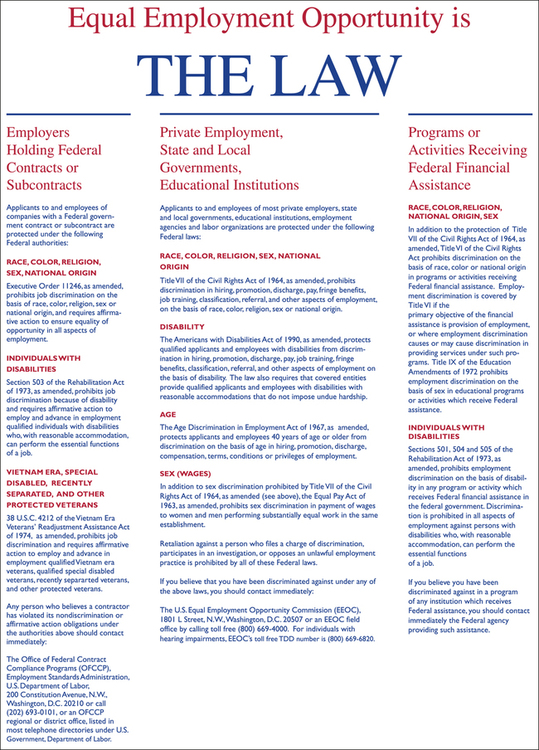
EMPLOYEE MANUAL
![]() An employee manual provides a guide for employees as well as a quick resource when a personnel issue arises (Figure 5-8). (See the Evolve site accompanying this text for the complete form.) A manual can solve workplace problems quickly and fairly because topics and policies have already been determined. If an employee manual has not been developed, it is important to take the time to establish one. It may be a good idea to have the practice attorney review the manual before distribution to ensure the practice is legally protected in every way possible. A court may find the employee manual to be a contract although a signed contract has not been established. Violations of the terms of the manual can be seen as a breach of contract; therefore it is important to state in the front of the manual that it is not a contract, and that the manual can be changed and updated at any time. New employees should read the manual, sign a document stating that they have received it, and understand that it is not a contract—simply a guide to employee policy. If any changes have been made, employees should read them and sign a document indicating that they have received the update (see Figure 5-7).
An employee manual provides a guide for employees as well as a quick resource when a personnel issue arises (Figure 5-8). (See the Evolve site accompanying this text for the complete form.) A manual can solve workplace problems quickly and fairly because topics and policies have already been determined. If an employee manual has not been developed, it is important to take the time to establish one. It may be a good idea to have the practice attorney review the manual before distribution to ensure the practice is legally protected in every way possible. A court may find the employee manual to be a contract although a signed contract has not been established. Violations of the terms of the manual can be seen as a breach of contract; therefore it is important to state in the front of the manual that it is not a contract, and that the manual can be changed and updated at any time. New employees should read the manual, sign a document stating that they have received it, and understand that it is not a contract—simply a guide to employee policy. If any changes have been made, employees should read them and sign a document indicating that they have received the update (see Figure 5-7).
 PRACTICE POINT
PRACTICE POINT What Would You Do/Not Do?
What Would You Do/Not Do?
 PRACTICE POINT
PRACTICE POINT PRACTICE POINT
PRACTICE POINT PRACTICE POINT
PRACTICE POINT PRACTICE POINT
PRACTICE POINT PRACTICE POINT
PRACTICE POINT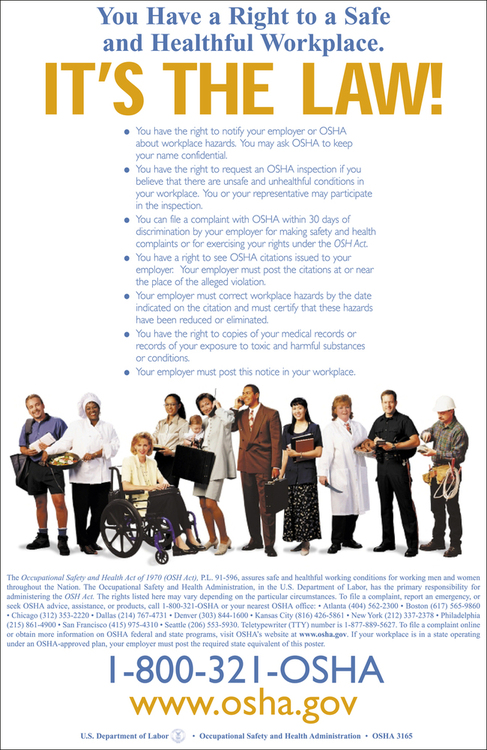
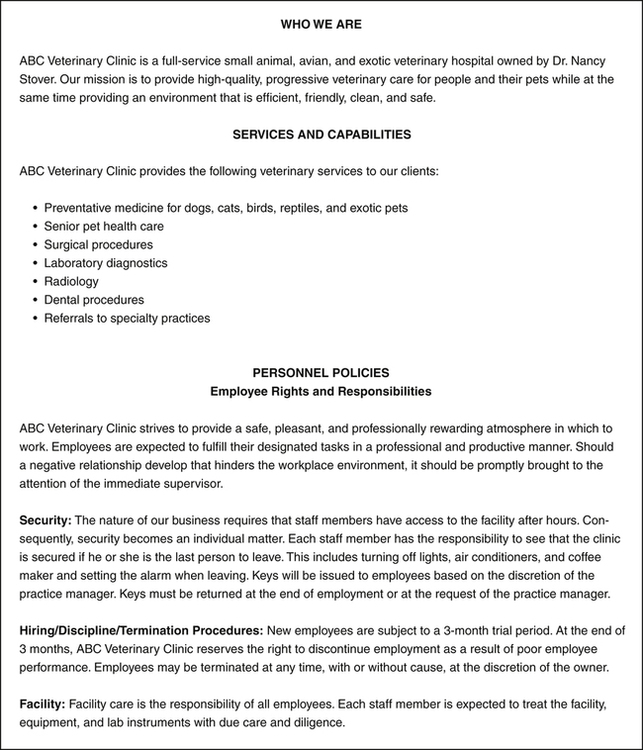
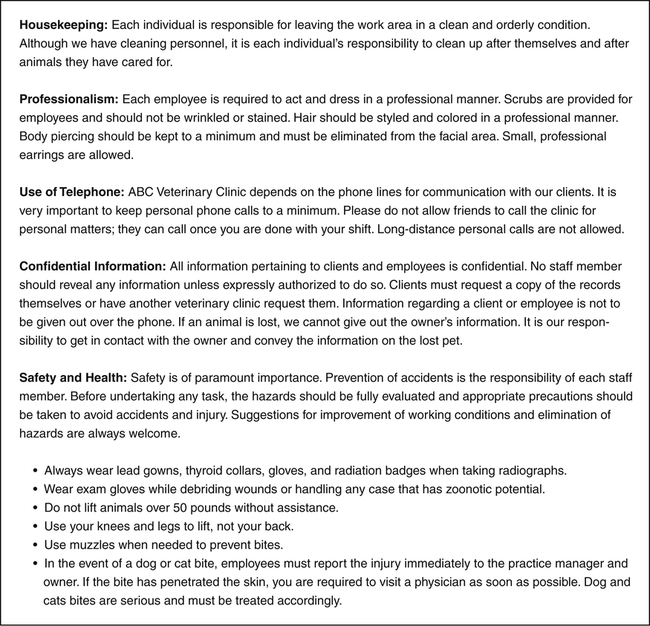
 PRACTICE POINT
PRACTICE POINT


